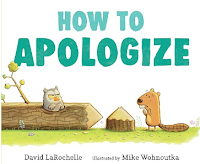Apologizing is an important life skill that helps maintain healthy relationships and resolve conflicts. Teaching students how to apologize sincerely is a vital part of character education. Here’s a friendly guide to help you teach this valuable lesson in your classroom.
1. Explain the Importance of Apologizing
Start by explaining why apologies are important. Help students understand that apologizing is a way to take responsibility for their actions, show empathy, and rebuild trust. Emphasize that a sincere apology can make others feel better and help mend relationships.
Example Explanation: "Apologizing is important because it shows we care about others' feelings and want to make things right when we've hurt someone."
2. Teach the Elements of a Sincere Apology
Break down the components of a sincere apology into simple steps that students can easily remember. Use the following steps as a guide:
- Say What You’re Sorry For: Clearly state what you did wrong.
- Example: “I’m sorry for taking your pencil without asking.”
- Acknowledge the Impact: Recognize how your actions affected the other person.
- Example: “I know it made you upset and frustrated.”
- Take Responsibility: Own up to your actions without making excuses.
- Example: “It was wrong of me to take something that wasn’t mine.”
- Express Regret: Show that you genuinely regret your actions.
- Example: “I feel bad for making you feel this way.”
- Offer to Make Amends: Ask how you can make things right or suggest a way to fix the situation.
- Example: “Can I help you find another pencil, or can I share mine with you?”
3. Use Role-Playing Activities
Practice makes perfect! Use role-playing activities to help students practice giving and receiving apologies. Create scenarios where they can act out apologies in a safe and supportive environment. This helps them feel more comfortable and confident when they need to apologize in real life.
4. Model Sincere Apologies
As a teacher, model sincere apologies in your interactions with students and colleagues. If you make a mistake or accidentally upset someone, use it as an opportunity to demonstrate a genuine apology. Your actions set a powerful example for your students.
5. Discuss Apologies in Literature
Incorporate books and stories that highlight characters giving and receiving apologies. Discuss the scenarios and the impact of the apologies. Use these discussions to reinforce the elements of a sincere apology and the importance of making amends.
6. Create an Apology Framework
Provide students with a simple framework or template they can use when they need to apologize. This can be a visual aid displayed in the classroom or a handout they can keep in their desks. Having a clear guide makes it easier for them to remember the steps.
Example Framework:
- I’m sorry for...
- I know it made you feel...
- It was wrong because...
- I feel...
- Can I make it right by...?
7. Encourage Reflection
Encourage students to reflect on their actions and the impact of their behavior. Help them understand why they need to apologize and how it can improve their relationships. Reflection fosters empathy and self-awareness, making their apologies more sincere.
8. Promote Empathy and Understanding
Teach empathy by encouraging students to consider how others feel. Use activities and discussions to help them put themselves in others' shoes. Understanding others’ feelings helps students recognize when an apology is needed and makes their apologies more heartfelt.
9. Celebrate Sincere Apologies
Acknowledge and celebrate sincere apologies in your classroom. Highlight examples of students who apologize genuinely and take responsibility for their actions. Celebrating these moments reinforces the importance of sincere apologies and encourages others to follow suit.
10. Involve Families in Teaching Apologies
Share your strategies for teaching apologies with families. Provide tips and resources for reinforcing the importance of sincere apologies at home. A consistent approach between home and school helps students better understand and practice this valuable skill.
By teaching students how to apologize sincerely, you help them develop important social skills that will benefit them throughout their lives. A sincere apology can mend relationships, resolve conflicts, and build a more compassionate and empathetic community.





